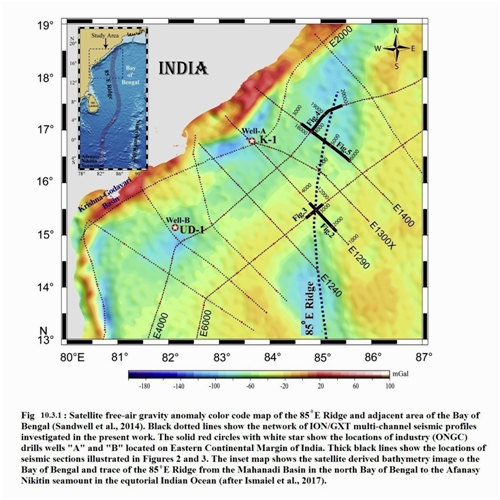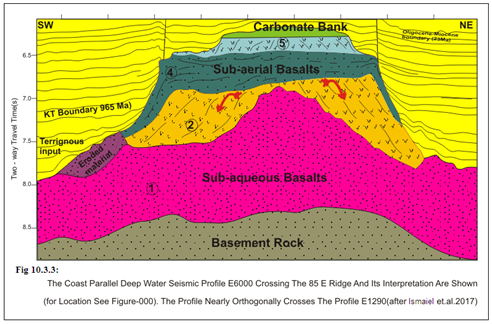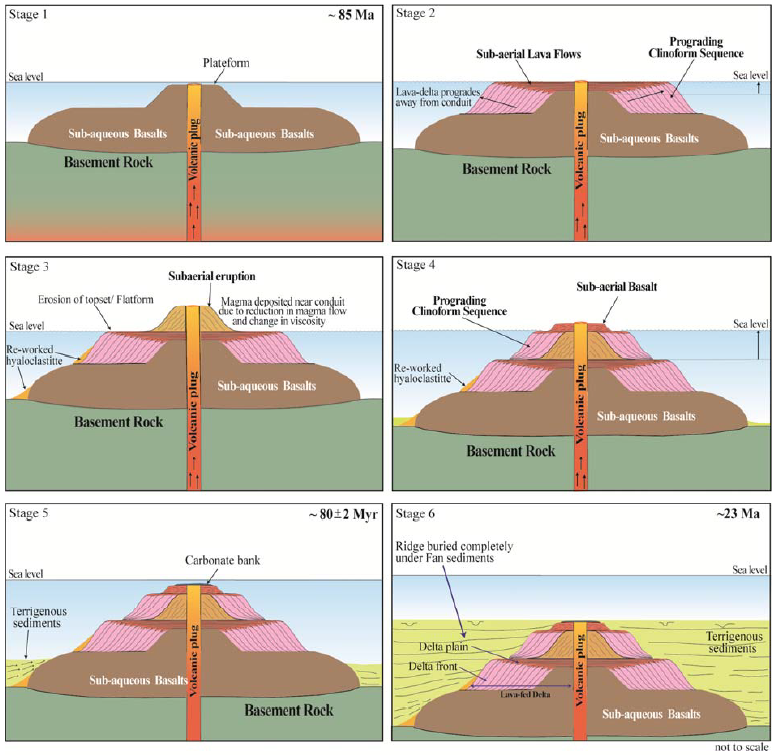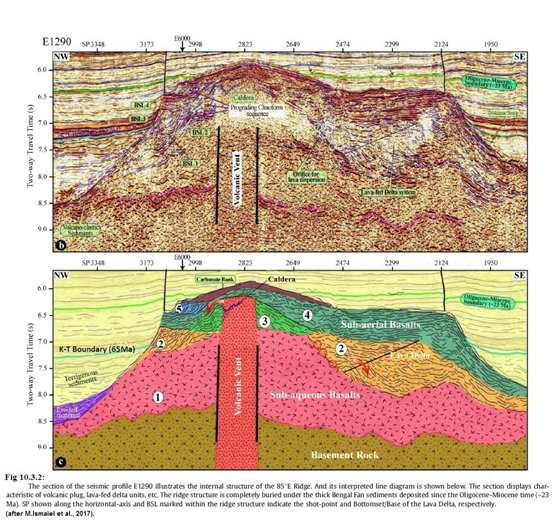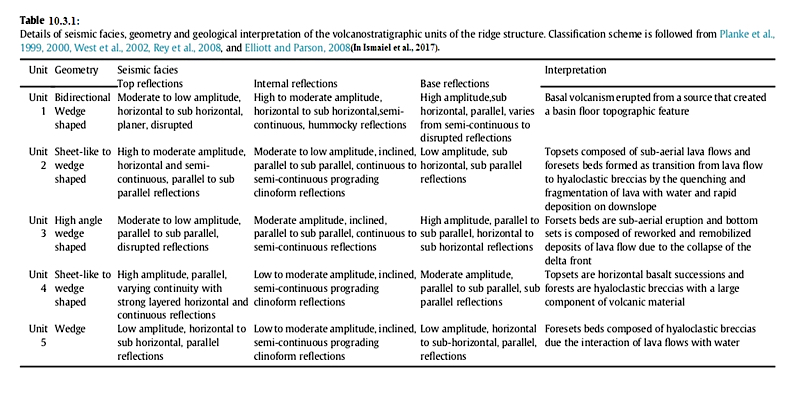85E Ridge Volcanostratigraphic Unit 3 Fm
Type Locality and Naming
Reference well: Profile E1290. Informal unit.
[Figure 1: Satellite free-air gravity anomaly color code map of the 85ºE Ridge and adjacent area of the Bay of Bengal (Sandwell et al., 2014)]
Lithology and Thickness
Volcanics. Presence of two small seismic sequences having high to moderate amplitude, semi-continuous and inclined reflections is noticed on either side of the upper part of the volcanic plug. The unit with geometry of 5-10 km horizontal distance and ~400 m height shows the vertical build-up of volcanic succession. The seismic sequence representing the retro-gradational style of volcanic succession (85E Ridge Volcanostratigraphic Unit 3 Fm) and mainly restricted around the volcanic conduit is found only on profiles E1290 and E1400. The prograding clinoform reflections interpreted on profile E6000 (85E Ridge Volcanostratigraphic Unit 2 Fm) are dipping in opposite direction, indicating the possibility of flow of volcanic eruptions in all directions
[Figure 2a: Coastal parallel deep-water seismic profile E6000 crossing the 85º E Ridge and its interpretation are shown. The profile nearly orthogonally crosses the profile E1290 (after Ismaiel et al., 2017)]
[Figure 2b: Schematic illustration showing the development of the 85°E Ridge through geological age (Ismaiel et al., 2017)]
[Figure 3: The section of the seismic profile E1290 illustrates structure of the 85º E Ridge. The section displays characteristic of volcanic plug, lava-fed delta units, etc. The ridge structure is completely buried under the thick Bengal Fan sediments deposited since the Oligocene-Miocene (~23 Ma). SP shown along the horizontal-axis and BSL marked within the ridge structure indicate the shot-point and Bottomset/Base of the Lava Delta, respectively. (after M.Ismaiel et al., 2017)]
Relationships and Distribution
Lower contact
This unit boundary has an unconformable contact onto 85E Ridge Volcanostratigraphic Unit 2 Fm.
Upper contact
The upper contact of this unit is to the overlying 85E Ridge Volcanostratigraphic Unit 4 Fm.
Regional extent
GeoJSON
Fossils
Biostratigraphic data is given below:
[Figure 4: Superimposition of biostratigraphic data on wire line logs and seismic section (Depth; in-line 1918)]
Age
Depositional setting
Additional Information
Foresets beds composed of hyaloclastic breccias due the interaction of lava flows with water.
[Figure 5: Details of seismic facies, geometry and geological interpretation of the 85E Ridge Volcanostratigraphic units of the ridge structure. Classification scheme is followed from Planke et al., 1999,2000. West et al., 2002. Rey et al., 2008. And Elliot and Parson, 2008 (in Ismaiel et al., 2017)]
